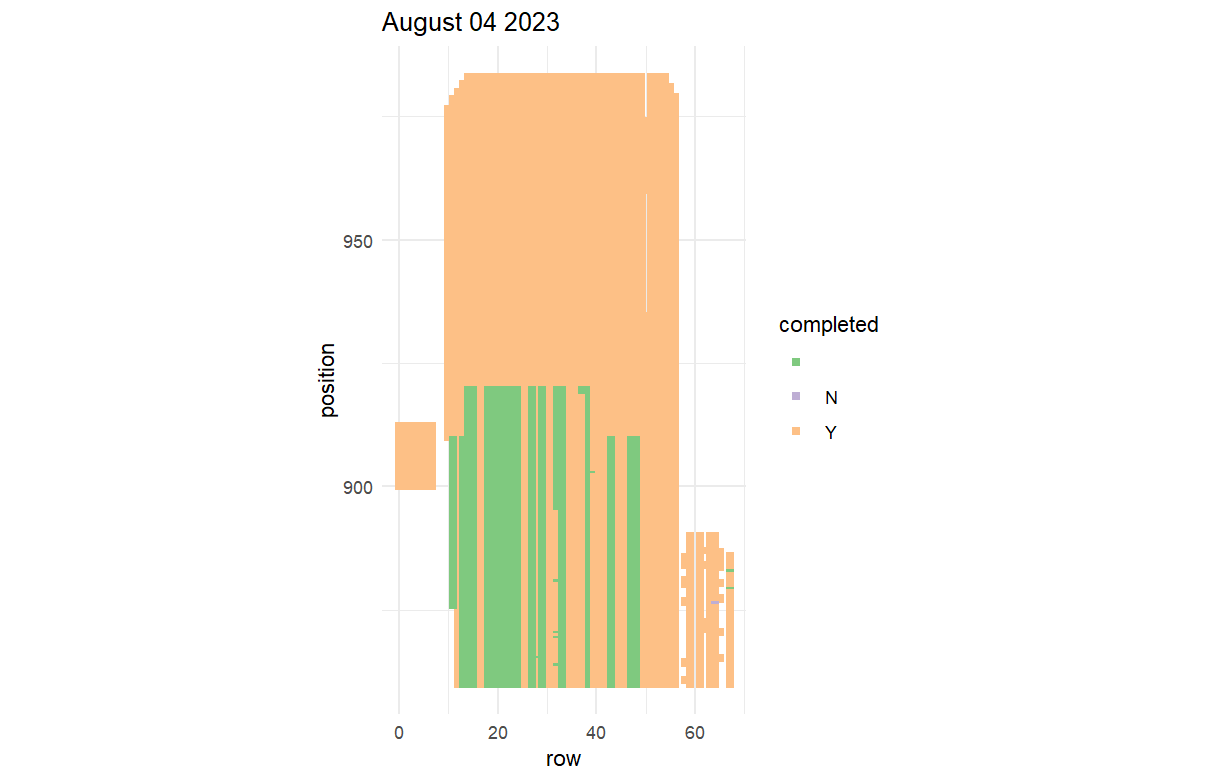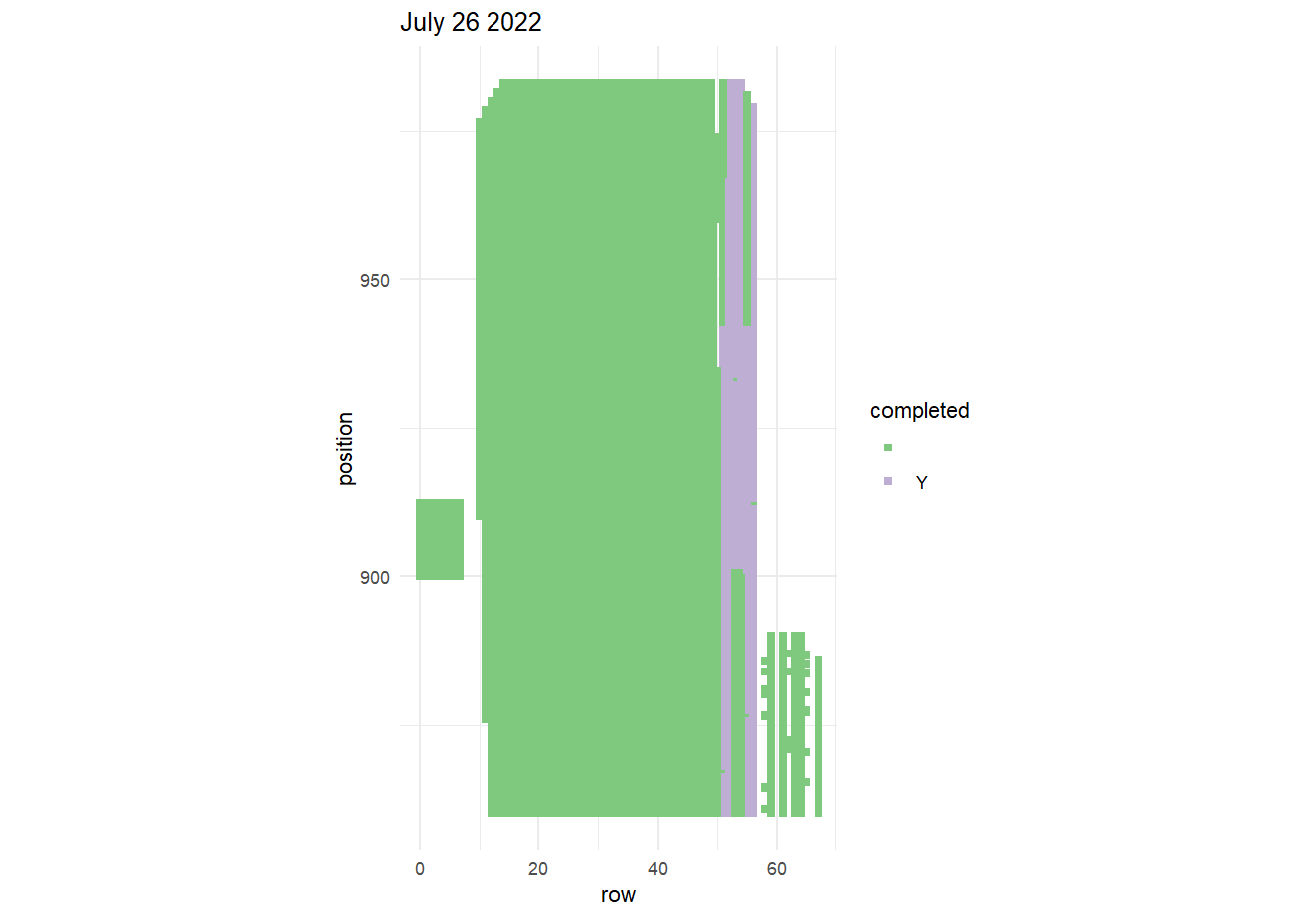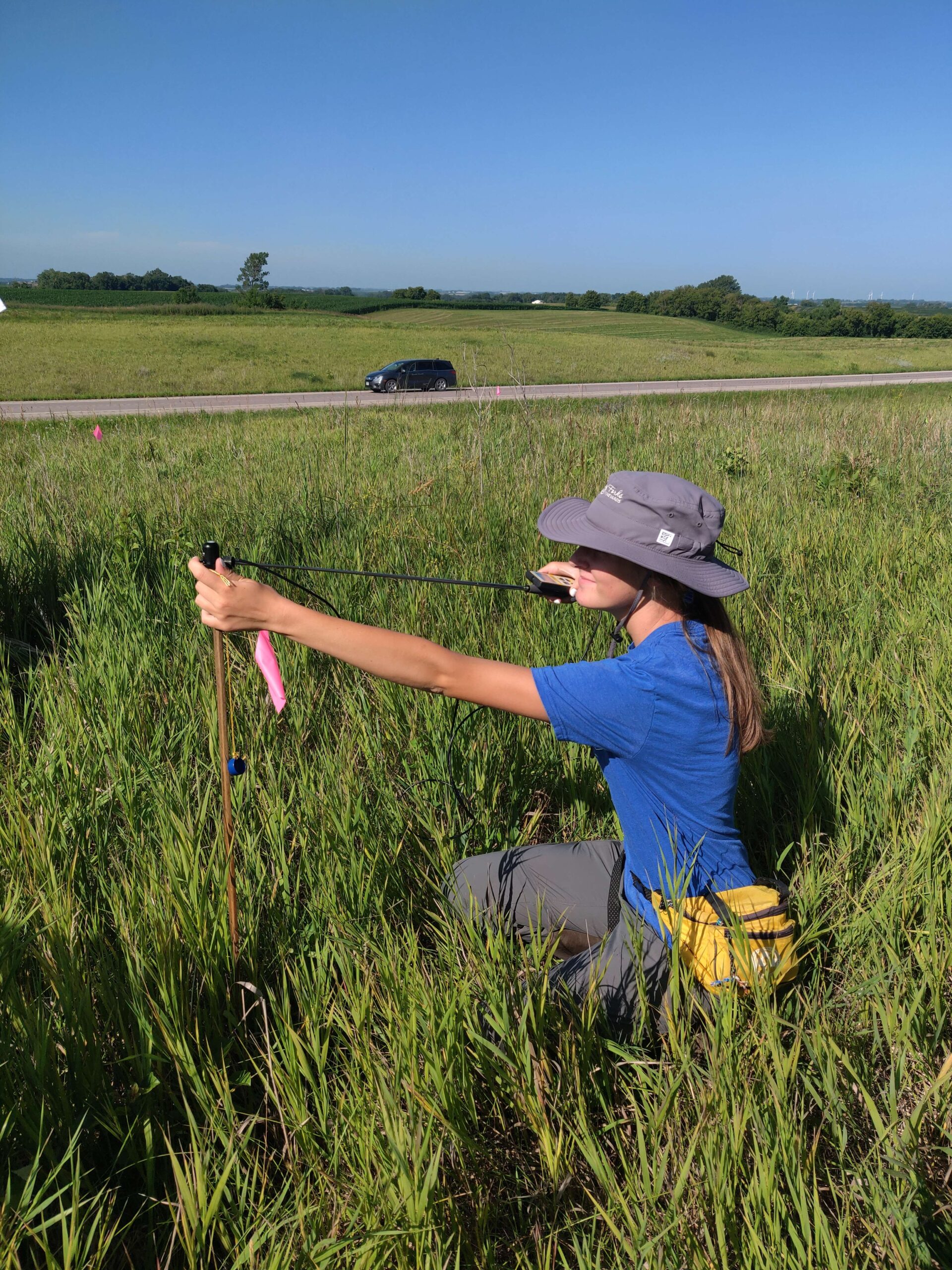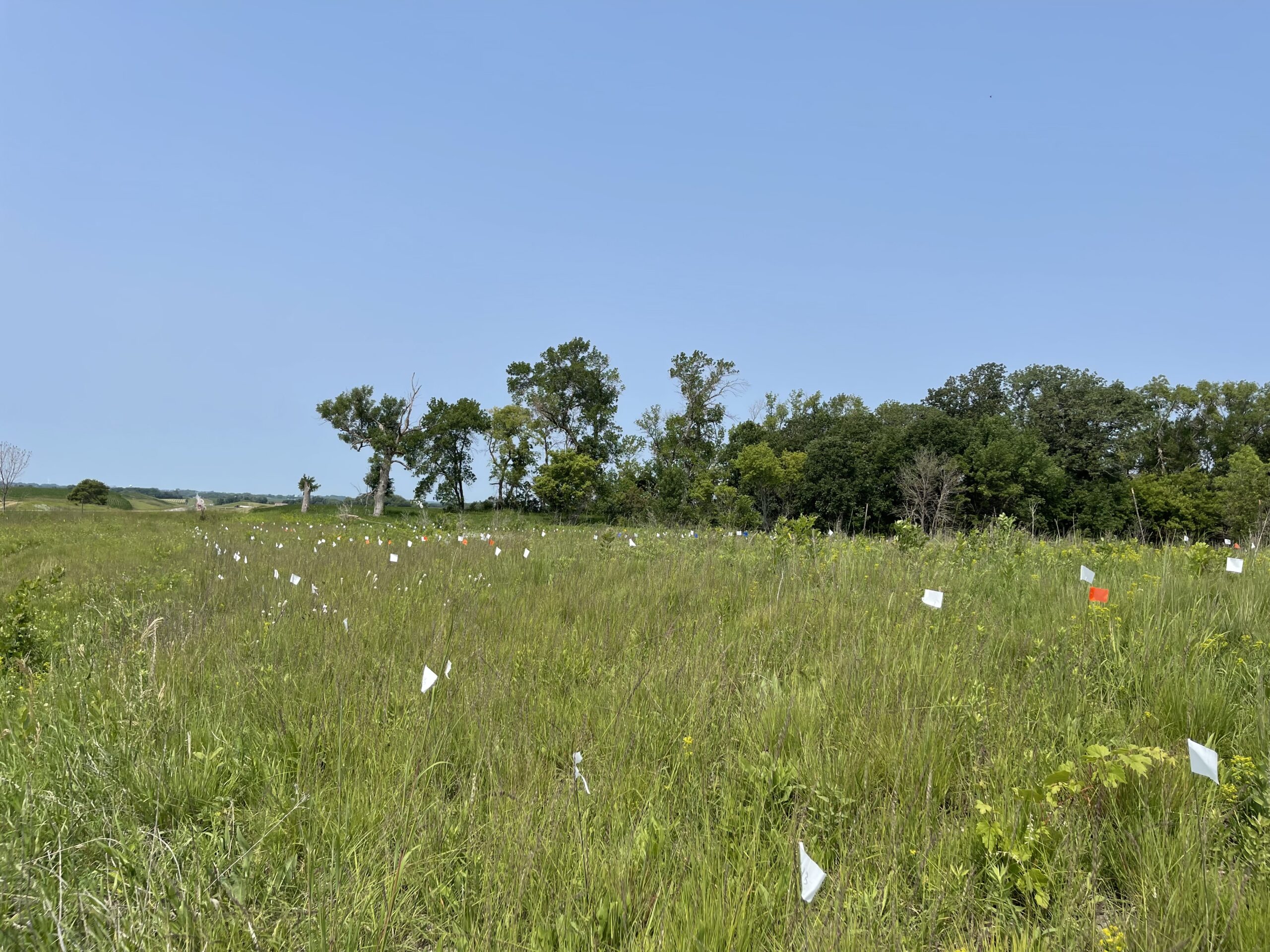Today, Ruth and Amy joined us to measure Amy’s Annex! We are now 81% done measuring P1, so close!

|
||||
|
Today, Ruth and Amy joined us to measure Amy’s Annex! We are now 81% done measuring P1, so close!  After a brief break from measuring yesterday, the team was back in action today. We are now 69% done measuring p1!  57% done and completely done with the 99s garden, which was a nice change of scenery! We’ve now entered 99n garden.  44% of the way done! Woo! Next we’ll be entering the 99 North Garden (the green section remaining in the northeast part of the plot).  29% done, made it into Big Batch! These rows are on the meter instead of the half meter, which feels a lot faster than half meter rows.  22% done, another effort made this morning with 4 pairs!  Yesterday, the team began measuring our biggest common garden experiment, P1! This plot has 10,992 positions that were planted with Echinacea. Yesterday, 3 teams of pairs went out for about 3.5 hours in the morning and knocked out 1,140 positions and 14 segments for over 10% of P1! I’m excited we made so much progress the first day! Below is map that visualizes progress. Stay tuned for today’s update.    In this episode of a day we started off testing out Jared’s protocols for micro habitats. We gathered data like soil compaction, light availability and litter depth from random test points. We had lots of success and even more discoveries on how to make things run smoother. Tomorrow we will put the newly revised protocol to the test in the first official episode of micro habitats! I was lucky to be partnered with Blaire for this flagging quest and we were an unstoppable duo. Each meter transect is marked with a nail, and between the the two of us, we had a high success rate for nail unearthing. Oftentimes they were parallel with the ground or hidden by nail-like imposters (rocks) that we suspect Stuart may have planted to test our nail-finding abilities. Blaire dubbed us as “private eyes” and I said we were “human metal detectors”. If you’d like to hire us for your investigation needs, you can contact us through the flog.  |
||||
|
© 2025 The Echinacea Project - All Rights Reserved - Log in Powered by WordPress & Atahualpa |
||||